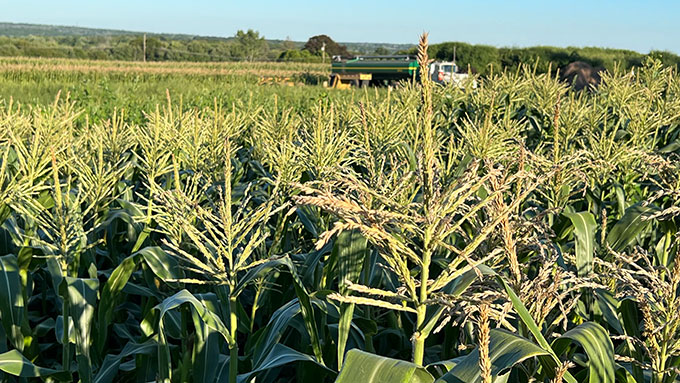Dairy Farming
Dairy Farming
You can’t take milk from a cow – she has to give it.
COWS ON SCHEDULE
Milking Time
Our farms milk cows on a regular schedule, two or three times each day, 7 days a week. Cows like routine, so keeping this schedule is important to their productivity. Cows willingly line up to go into the milking parlor. Quality and cleanliness are assured by moving the milk through sanitized piping into a large cooling tank that is speed chilled. An insulated tanker truck picks up at least once daily (sometimes twice, depending on the farm’s volume of milk) to safely transport the precious cargo to the bottling plant.
BRINGING IN THE CROP
Harvesting
It takes a lot of feed to keep dairy cows healthy! We work with animal nutritionists to be sure we are growing the best feed possible. In spring, we harvest fresh grass in the early bud stage when it has the highest protein content. Corn is cut in early fall when moisture content and ears are at their best. Chopping the corn to just the right length is critical – if the corn and stalks are chopped too long or short our cows will have difficulty digesting it.
SEASONS OF PLANNING
Working the Land
The green fields of grass or waving stalks of corn you see all summer are the main source of food for our herds throughout the year. Seeds, soil nutrients and fertilizers are ordered in in late winter. Corn is planted early in spring. Each farm operates multiple tractors and dump trucks, and use tractor attachments including corn choppers, grass choppers, manure spreaders, planters, and harrows. It’s a full-time job just to keep all this equipment maintained.
A HAPPY HERD
It’s a Cows Life
Keeping our cows healthy and content is our highest priority. Our milking cows roam freely around the barn, eating, drinking and resting whenever they choose. Our barns include wide alleys, high sidewalls and large overhangs to optimize airflow, fans and misters to keep cows cool in the summer, and curtains keep out chill winds in cold weather. A cow starts to produce milk when she gives birth to her first calf. Like us humans, cows carry their babies about 285 days. She will produce milk for about 9-10 months. After giving milk for 10 months, she’s “dried off,” in a separate area or pasture to prepare for calving again.
YOUNGEST MEMBERS OF THE HERD
Raising Calves
Calves are born in birthing pens with thick, dry bedding. A calf usually weighs about 75 pounds at birth and will stand and begin to nurse within a few hours. Calves live in a greenhouse pen or a “hutch” with clean, dry bedding, and their own feed and water, so they have a protected spot to enjoy fresh air and sunshine. At about 8 weeks old, calves move to a group pen with three or four other heifers their age – we say this is like going to kindergarten. A heifer is ready to be bred at about a year old. Once she’s carrying a calf, her diet is changed to support prenatal nutrition. Some of our member farms even send pregnant heifers to graze on pasture to prepare for calving.
STEWARDS OF THE LAND
Farms for the Future
Farmers need access to good soils and farmland to grow crops and produce local foods we all enjoy. Preserving farmland ensures the land is available for producing food for generations to come. We know first-hand the impact affordable and available land has on our family farms. The Farmer’s Cow members have collectively preserved well more than 3,000 acres of active farmland through the Connecticut Farmland Preservation Program. Access to this land has benefited all our farms with critical crop land—our cows can “eat local,” too.

